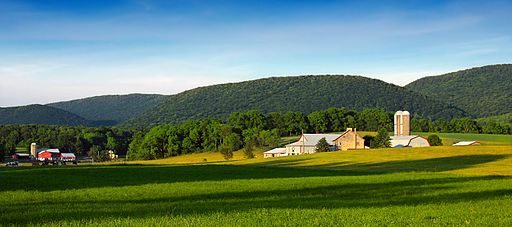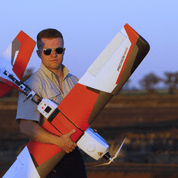JANUARY 31, 2017

By Nicholas A. Tonelli (Flickr: Nittany Valley Farms) [CC BY 2.0 ]DRONELIFE originally published this article in 2014 – this article has been completely updated from the original as of 2017.
While drones are spreading into industries from warehousing to oil exploration, precision agriculture remains one of the most robust segments of the market. The ROI for drones in agriculture is compelling: and farms of every size are taking advantage of drone technology.
Three years is almost a lifetime in the drone industry, and much has changed since DRONELIFE first published our first list of the 7 Best Agricultural Drones on the Market. With new technology, new regulations, and new software and service offerings farmers have more tools to work with than ever before.
Some of the drones on our list remain from the original: PrecisionHawk (Lancaster) and SenseFly (eBee) have been major players in the drone industry and are continually improving their offering. The AgEagle is a drone specifically designed in collaboration with researchers at Kansas State University for precision agriculture, and it does the job well; HoneyComb’s AgDrone is another drone designed with agriculture in mind. But the rise of the prosumer drone, and the move by traditionally recreational drone companies like DJI into the professional space, have created more options. New services that provide qualified drone pilots have created a realistic choice for agronomists who don’t also wish to become Part 107 certified.
Let’s start with some of the leading commercial manufacturers in the industry: North Carolina-based PrecisionHawk and Parrot’s Switzerland-based senseFly.

image courtesy PrecisionHawk
PrecisionHawk takes a forward position not only in the production of commercial drones, but in all aspects of UAV technology. They are instrumental in the work of drone integration in the US, and are a prominent voice in drone regulations efforts. And while the company sells commercial packages that include DJI prosumer drones, their own Lancaster model remains an industry leader. The Lancaster can be used across industries: including mining, energy, and inspection; but its ease of use and durability make it ideal for agriculture, especially in difficult conditions. Lia Reich, PrecisionHawk’s VP of Marketing and Communications, says the platform is perfect for precision ag – and has stood the test of time. “PrecisionHawk’s first platform, the Lancaster, has been consistently updated as we learn and better understand the needs of our customers. Currently on its fifth iteration, the Lancaster fits the agriculture market’s need of capturing consistent data across large areas, but we have also seen significant growth for research applications,” says Reich. “The platform is well suited for enterprise seed and chemical companies and university researchers who need to fly various types sensors for advanced remote sensing applications. Engineers at PrecisionHawk have been able to differentiate the Lancaster from the other platforms the company sells, including the DJI M100 and M600 Pro, by integrating sensors like thermal and LiDAR while also improving durability and overall flight performance. In the end, the goal is to ensure accurate data collection on every flight. To do so, we continue to make the platform more autonomous and user-friendly to ensure the seamless integration of drone technology into our client’s existing workflows.”

image courtesy senseFly
senseFly’s eBee drone is another industry name found on our original list. Referred to then as the “eBee Ag Drone” it’s now the eBee SQ, a lightweight fixed-wing with Parrot’s fully integrated Sequoia camera. eMotion Ag flight planning software is designed to help integrate the drone into existing workflows. And the flight range – which senseFly says results in fewer flights – makes it an effective tool for large scale farms. The company has been diligent in keeping the platform evolving. “The eBee SQ allows agricultural professionals to collect highly precise data on the health of their crops, efficiently and cost-effectively,” says Jean-Christophe Zufferey, senseFly’s CEO. “It represents a platform-proven upgrade for those who may have been trialing drone technology—for example by flying quadcopters over their crops—including those who already own a Parrot Sequoia. By upgrading to the eBee SQ, these operators gain a professional-grade, easy-to-use system that can cover many more acres in a single flight.”
Two more of the drones on our list were also on the original. Designed specifically for agriculture and sold almost exclusively for that purpose, Oregon-based HoneyComb provides an all-in-one hardware/software/data storage solution with their AgDrone. The composite drone was built for durability and flight endurance. Two cameras provide an array of data; and HoneyComb provides their own data processing services to provide actionable information. Additionally, the company claims that the AgDrone System™ features an advanced autopilot system that allows “the drone to fly itself. No flying experience required.” (Note – in the U.S., while the drone may not require experience, the pilot needs a Part 107 license to fly legally for agriculture.)
The AgEagle was designed for agriculture in collaboration with researchers from Kansas State University. The AgEagle RX 60 claims to be “the most durable, lightweight, professional-grade drone technology on the market.” The carbon-fiber, electric powered drone has a flight endurance of 45 -60 minutes. The RX 60 is outfitted with a modified GoPro camera for data collection, and AgEagle offers a proprietary cloud processing system. The company says that in-flight data processing is in development. “The nature of farm equipment is that it takes a serious beating over time,” said our original article. “In anticipation of this issue, the AgEagle is outfitted with a composite shell of fiberglass and carbon fiber cloth in addition to a poly carbonate skid plate… It’s an aerial tank that can fly in winds up to 20 miles an hour.”

DJI’s Phantom 3
New to the list are offerings from drone manufacturing giant DJI. DJI has two different offerings that have a significant presence in precision agriculture: the prosumer Phantom or Matrice lines, fitted with tools for precision agriculture; and the AGRAS MG-1, DJI’s first professional agriculture drone. Because so much of precision agriculture is in the software platform that turns data into actionable information, companies like PrecisionHawk have created cost-effective packages that combine a ready-to-fly DJI drone with software and data processing services. Additionally, independent drone operators who provide flight services – and a drone – to farmers are more likely to use one of these prosumer drones, which can serve multiple purposes. But DJI is also moving into the higher price range of agricultural drones, with the AGRAS MG-1, introduced at the end of 2015. The foldable-arm octocopter is not designed for data gathering, but for action plans: carrying a payload and sprayer system for precision application of fertilizer, pesticides, and herbicides.
Finally, the last on our list isn’t a drone; but an updated reference article would not be complete without a mention of the outsourcing services now available. As the industry has evolved and regulations have become clearer, many farmers may decide to outsource drone programs rather than bringing them in-house. (It should be noted that in the US, all use of drones for precision agriculture is considered “commercial” – even if it’s your own farm that you are flying for. Any agriculture application in the US requires a Part 107 Remote Pilot’s license.) Services like Measure offer a turnkey agricultural solution, providing the drone, pilot, and data. Smaller commercial marketplaces like JobForDrones list licensed commercial operators and specialties in every region; and data platform providers like DroneDeploy provide lists of licensed operators who can use their data platform to provide actionable information to farmers.
With the industry expanding, drones are poised to make a difference in many verticals. But while agriculture was one of the first to take advantage of drone technology, it remains among the largest applications that get the benefits of a birds-eye view.
Read more:
No comments:
Post a Comment